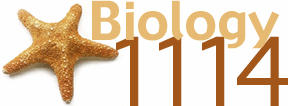
For a printable copy of this page click here.

For a printable copy of this page click here.
Emerging
Diseases
I. The Introduction
A. What Do You Think of When You Hear "Emerging Disease"?II. Epidemics and Human Populations
B. What Influences Disease?
C. Along the Amazon
D. Infectious Disease and Parasites
E. Transmission and Populations
A. Population Density: Why Does It MatterIII. Epidemic: Susceptible Hosts AKA Hosts That Are Not Resistant
B. Birth Rates
C. Death rates and Survivorship
D. Population Dynamics or Population Growth: The Result
E. Population Control: How Does It Happen?1. Density-dependent controls and carrying capacitya. parasitism2. Density-independent controls
b. predation
c. competition
A. Immune Function: A Major Part of ResistanceIV. Epidemic: Treatment of Infectious Disease and Evolution of Pathogens Resistant to Treatment
B. Just a Little Bit about Immunity in Mammals
C. What Affects Immunity in an Individual?
D. Evolution of Immunity
A. Mutations As Genetic ChangeV. Epidemic: When TB Flourishes VI. Epidemic: How Infectious Disease Came To Be So Important in People
B. Antibiotic Treatment As Selective Agent: Multiple Drug Resistant TB
A. Agriculture . Concentration of PopulationVII. Parasitism: Habitat and Niche
B. Sedentary Populations in Fixed Areas: What Does This Lead to?
C. Global Mobility of People, Pathogens and Other Hosts
D. People and Other Animals Are Not the Only Ones Subject to Epidemics
A. For M. tuberculosisVIII. Evolution: Parasitism to Mutualism
B. Habitat Changes in the Environment of a Parasite: Lyme Disease
A. The Tennessee Amoeba and Its ParasitesIX. Recall Coevolution
B. The Endosymbiont Theory of Origins of Mitochondria and Chloroplasts